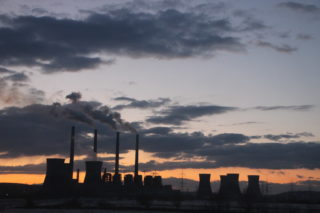-
Australia’s largest coal-fired power plant to close seven years earlier than scheduled
Date posted:
-
-
-
Post Author
Patrick LaveryCombustion Industry News Editor
-
-
![]()
The owner of Australia’s largest coal-fired power plant is seeking approval to close it by August 2025, seven years before the previously scheduled closure date, as the Australian Broadcasting Corporation reports.
Australian Energy Market Operator (AEMO) rules are such that plant operators must give three and a half years notice of intention to close, meaning that Origin Energy (the owner) are seeking the minimum notice period for the 2,880 MW Eraring Power Station, in the Hunter Valley area to the west of Newcastle in the state of New South Wales. In its place, Origin is planning a 700 MW (2800MWh) battery energy storage system, with chief executive Frank Calabria saying that “the economics of coal-fired power stations are being put under increasing, unsustainable pressure by cleaner and lower cost generation, including solar, wind and batteries.”
Closure of the plant has raised grid stability concerns, but New South Wales Energy Minister Matt Kean, who has been involved in the decision-making process along with the AEMO, has said that the AEMO believes that “we will meet our energy security target even with the closure of Eraring in 2025”. AEMO qualified this by saying that new high-voltage transmission lines that could help accommodate the growing levels of renewable energy will need to be built. (The NSW government also plans to build a larger 1,400 MW battery energy storage system in the Hunter Valley at some point, although batteries generally tend to serve for backup for several hours rather than several days or weeks.)
Energy analyst Matt Rennie explained the economics of the Eraring closure thus: “Coal-fired generation finds itself in a situation where it can’t make money during the middle of the day and it’s increasingly harder to make money towards the end of the day as well.” In a statement that highlighted the friction between the federal government and lower levels of government in relation to energy and climate change policy, Federal Energy Minister Angus Taylor said the closure will mean higher electricity prices and increased risk of grid insecurity. The news comes shortly after Western Australia authorities joined their South Australian counterparts in gaining the right of ‘curtailment’ of new and upgraded domestic rooftop solar power generation, allowing those installations to be switched off from the grid to help ensure stability.

